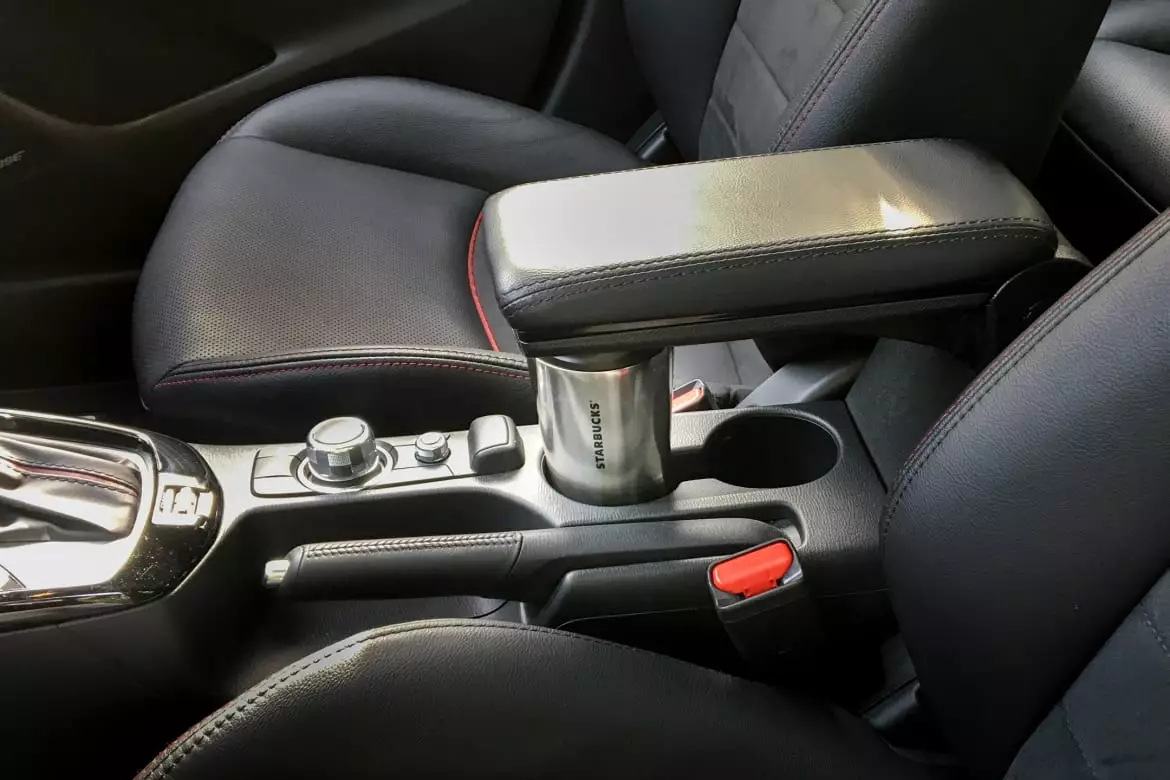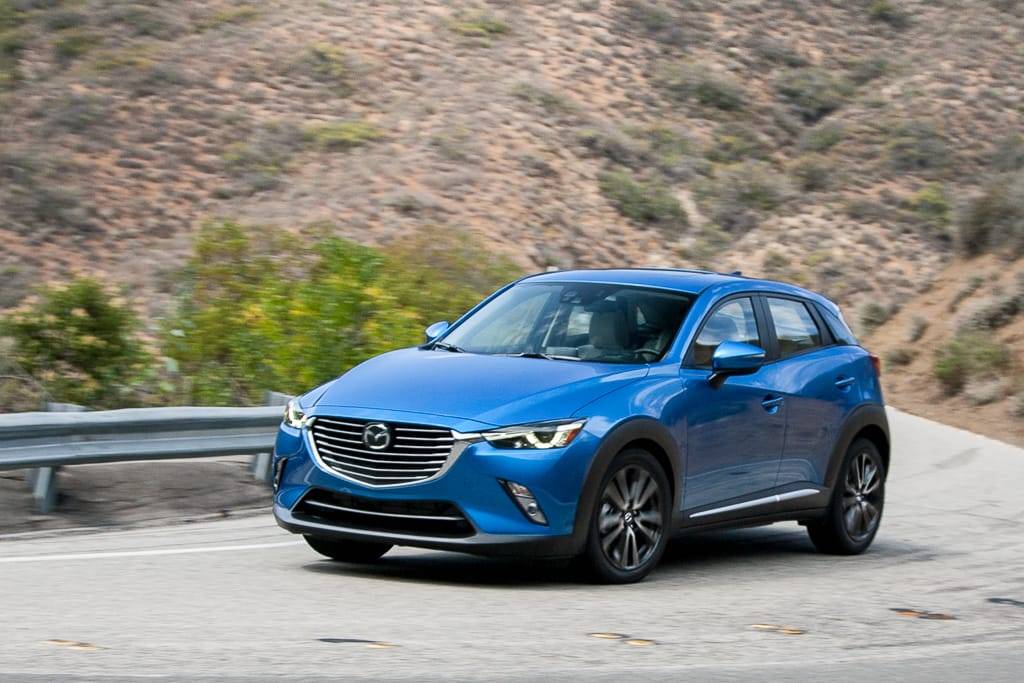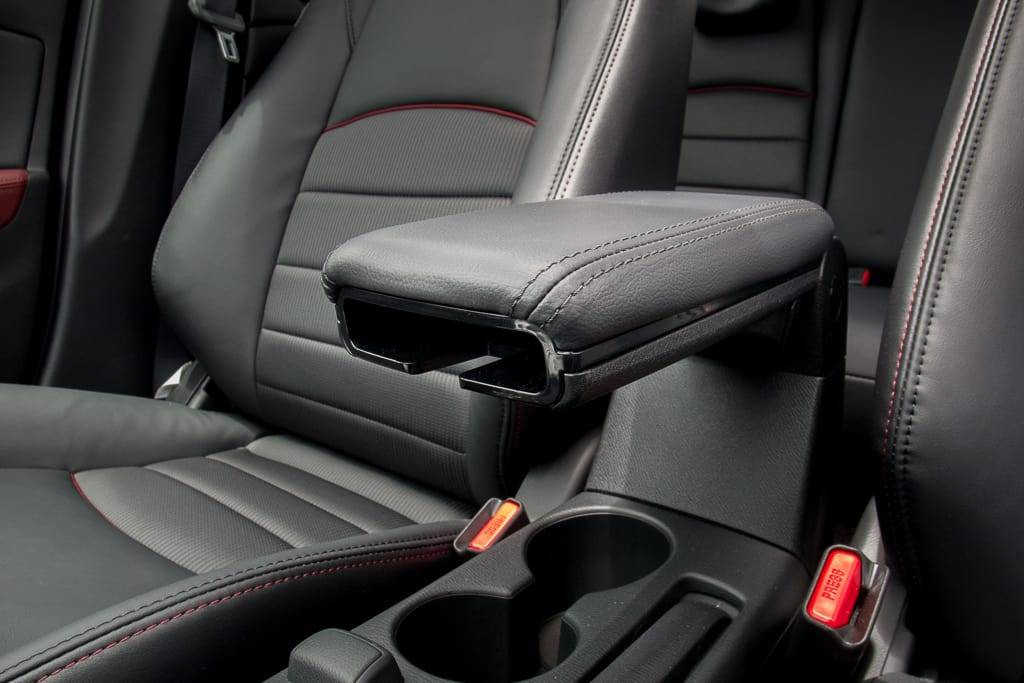Cupholder or Armrest? The Mazda CX-3 Makes You Choose


CARS.COM — Would you rather rest your arm or drink your coffee? It’s a choice you have to make in Mazda’s subcompact CX-3 SUV because the center armrest folds down for leisure and up for grabbing your to-go-cup.
Related: 2016 Mazda CX-3: First Drive Review
Depending on your habits, you might not care — or it might be a deal breaker. But it’s one of those quirks you might not notice during a dealer test drive (do you bring a drink along?), only to have it be a source of remorse when you get it home.
In the CX-3, the wide, padded, folding armrest completely covers the cup holders when it’s down (and makes it slightly awkward to operate the console-mounted multimedia controller). When it’s up, you have two useful cup holders, though a taller driver’s elbow will bump the hard plastic underside when grabbing a drink.

Cars.com editors often come across such head-scratchers, so we asked Mazda why. “It’s always a compromise to put a lot of stuff in a very small space,” said Mazda spokesman Jacob Brown. “There are always options. It comes down to packaging and cost considerations.”
For Mazda’s small global products, size matters, but so do local tastes. Turns out armrests are a bigger deal for Americans — and the folding armrest for the U.S. CX-3 was designed specifically for American drivers by Mazda North America to be wider and more padded. It’s port-installed as a standard feature in the Touring and Grand Touring trims of the Hiroshima, Japan-built vehicle; it’s a dealer-installed option on the Sport, pictured here without an armrest.
“There are markets where they don’t put as much priority on an inboard armrest,” said Brown, adding that the CX-3 doesn’t even include one in some markets. That wouldn’t fly here, he said. “You can’t sell the vehicle in this market without an inboard armrest.” And a narrower armrest used in Japan “didn’t work for American tastes” (arms?).

But don’t Americans famously like their cup holders, too? Apparently, moving them would cause other problems with the components between the seats. The less-costly handbrake had to stay. “There aren’t a whole lot of electronic parking brakes in this segment,” said Brown.
And the knob-and-button controls for the multimedia system are a matter of principle for Mazda, which only activates the CX-3’s 7-inch display as a touch-screen when the car isn’t moving. “Mazda believes you shouldn’t be using a touch-screen while going 70 miles an hour — use the knob controller or voice commands,” said Brown.
So shoppers in the market for a small SUV are left to decide if this cup holder issue matters for them. The CX-3 is small, even in this smallest class of SUVs, and space compromises were a factor offsetting its stylish design and driving fun for judges in Cars.com’s Subcompact SUV Challenge. The folding armrest does include a novel slot in front to hold a cellphone, though Cars.com Executive Editor Joe Wiesenfelder had problems using it.

One feature Mazda added for the 2017 CX-3 is a $750 cheaper price tag (from $1,170 for the 2016 CX-3 to $1,920) for its robust i-ActivSense Package of advanced safety technology that includes some features not available in many rival subcompact SUVs. It may not hold your drink, but the package, offered only on the top Grand Touring trim, includes forward collision warning with automatic emergency braking, adaptive cruise control, lane departure warning, automatic headlights and high beams, and rain-sensing wipers. Blind spot and rear cross-traffic alerts and a backup camera already are standard.
The 2017 Grand Touring with all-wheel drive and the safety package now tops the lineup at $28,310 with destination. The base CX-3 Sport, with front-wheel drive — and no armrest — is unchanged, starting at $20,860.

Former D.C. Bureau Chief Fred Meier, who lives every day with Washington gridlock, has an un-American love of small wagons and hatchbacks.
Featured stories




